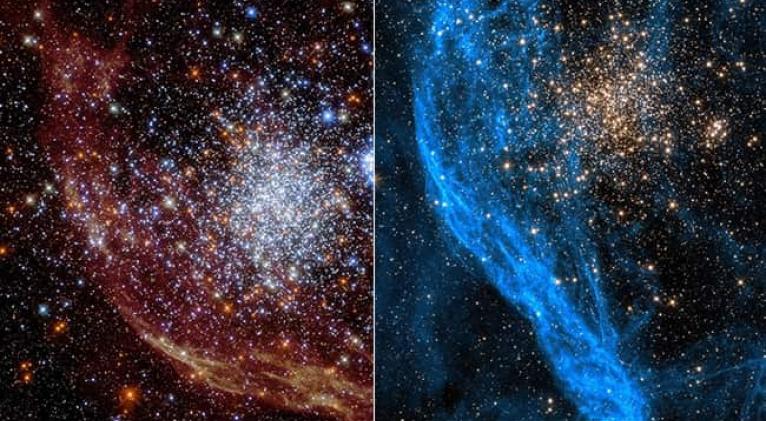NASA Shares Breathtaking Images Of Cosmic Object 160,000 Light-Years Away
especiales

NASA's Hubble Space Telescope recently captured dual views of an unusual star cluster. American space agency NASA has shared photos on Instagram of a "globular cluster", which contains thousands of glittering stars from the universe. The cosmic object is located 160,000 light-years away. Although Hubble took both images, different filters were used to study different wavelengths of light emanating from these objects, according to a press release by NASA.
The release further said that the image with blue nebulosity includes some near-infrared light along with visible light (what our human eyes can detect), whereas the image with red nebulosity (also a different "pointing" at the same object) covers a much broader range from the near-ultraviolet to the beginnings of the infrared spectrum. Ultraviolet observations are ideal for detecting the light from the hottest and youngest stars, as seen in this luminous, starry view.
The American space agency informed that this 100 million-year-old globular cluster is located in the Large Magellanic Cloud, a satellite galaxy of the Milky Way. Typical of globular clusters, it is a spherical collection of densely packed stars held together by mutual gravitational attraction. Unlike most globular clusters, these stars are relatively young.
Astrophysicists theorize that when the first generation of these stars in NGC 1850 was born, they ejected matter like dust and gas into the surrounding cosmos. "The density of the new star cluster was so high that this matter could not escape the cluster's gravitational pull, causing it to stay nearby and form a second generation of stars, increasing the density of this globular cluster. By using Hubble data to study clusters like this, astronomers are able to better understand star formation," NASA wrote in the caption.
In 2021, researchers detected the presence of a black hole in NGV 1850. Scientists have also detected many brighter blue stars (seen on the right of the second image) that burn hotter and die younger than red stars. Also present are around 200 red giants, stars that have run out of hydrogen in their centres and are fusing hydrogen further from their core, causing the outer layers to expand, cool, and glow red (seen throughout the second image). Surrounding the cluster is a pattern of nebulosity, diffuse dust and gas theorized to come from supernova blasts (the blue veil-like structures on the first image and the red ones on the second image), according to the release by NASA.














Add new comment